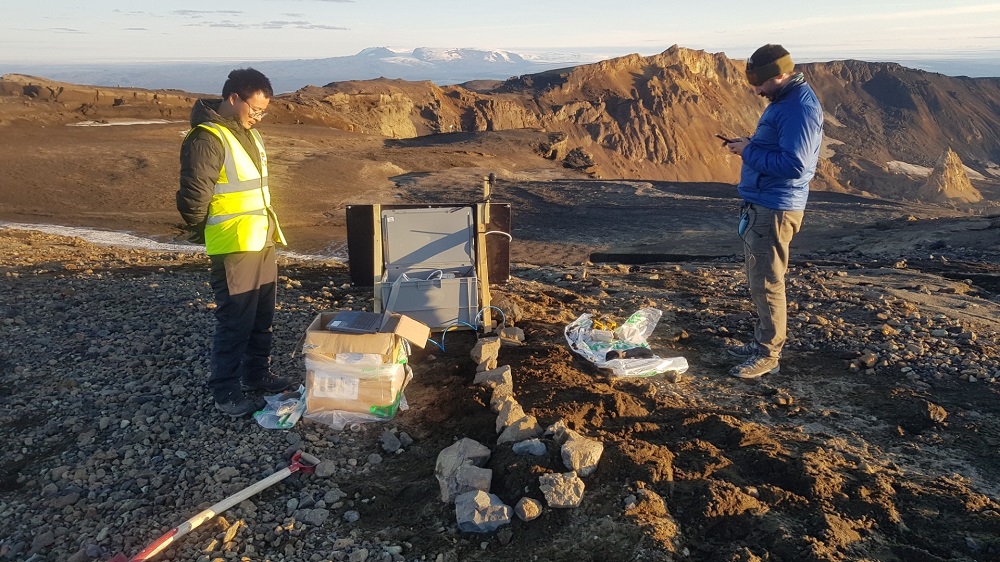
Presentation
Askja is a large central volcano in the Northern Volcanic Zone (NVZ) of Iceland, which last erupted in 1961. Since the early 1970s, it has been gradually deflating, but in August 2021, it switched to reinflation after ~50 years. In the nearly two years since, peak surface uplift has exceeded 60cm, which is now approaching the total subsidence measured in the preceding half century. Cambridge has a large backbone seismic array in place in the southern region of the NVZ, which has detected increased earthquake activity associated with the reinflation. However, it lacks the resolution to detect very shallow changes in the magmatic plumbing system, which is why Cambridge and ULB scientists have decided to deploy a dense array of seismometers and a fiber optic cable in the Askja caldera. This will allow for greatly improved earthquake detection, shallow imaging and measurement of temporal changes in the subsurface, which are all crucial for better understanding the nature of the reinflation event.
Promoters
- Nicolas Rawlinson, Department of Earth Sciences, University of Cambridge
- Corentin Caudron, Département Géosciences, Environnement et Société, ULB


